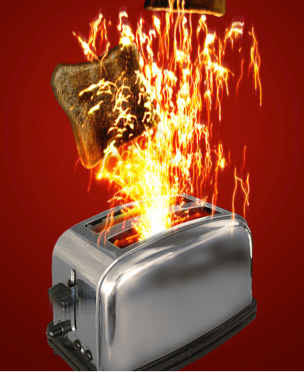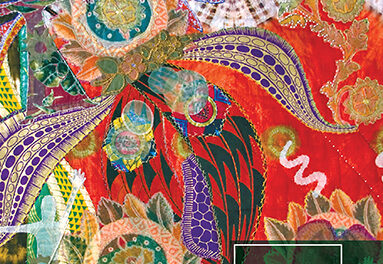Eric Van Hoose: Ghost stories tend to hinge on the question of the ghost’s existence. Either the figment is real or it isn’t, and story’s purpose is to find the answer. But from the first moments of Leslie Entsminger’s “The Brief Second Life of Winston Whithers’s Wife,” when the spirit of Winston’s dead wife—initially haunting his bed—calls him an asshole, it’s clear that this is a different kind of ghost story. Ghosts are definitely present, inhabiting coffee grinders, violins, dildos, vacuums, and their hauntings are circumscribed by expensive, legally binding contracts drawn up and sold by the Church of Inanimate Possession (which, we learn, has branches “everywhere”).
Though most ghost stories test the limits of plausibility and reader credulity—Are there no rules? Are we meant to take this seriously?—in Entsminger’s hands, the paranormal world is no excuse for license. The story sets strict rules and takes them seriously.
 An hour later, Winston sat in the kitchen with the toaster in front of him on the table. It had changed. The dent where one of their cats had knocked it off the counter was gone, and it was definitely shinier. It had taken a few tries. The pamphlet had given vague instructions to find the object with the “most vibrations,” which confused both of them, until Chloris had concentrated and had gotten the hang of it.
An hour later, Winston sat in the kitchen with the toaster in front of him on the table. It had changed. The dent where one of their cats had knocked it off the counter was gone, and it was definitely shinier. It had taken a few tries. The pamphlet had given vague instructions to find the object with the “most vibrations,” which confused both of them, until Chloris had concentrated and had gotten the hang of it.
Entsminger’s ghosts are profoundly constricted, confined, and through observing the details of this limited kind of embodiment, we see the impoverishment and, simultaneously, the beauty of the bodies we all haunt.
They fell into their old habits, the only exception being that each evening he carried Chloris into the park so she could hear life around her. In the morning, Winston left Chloris on the counter so she could hear the radio. When he came home, he ate dinner and told her about his day. After an evening of game shows, he took her upstairs to bed and tucked her in. At first, he’d wanted to snuggle, but Chloris didn’t like it, saying he left fingerprints on her.
When you’ve begun where most ghost stories finish, when the hauntees are aware of the circumstances and can, as Winston does, verify the relevant contractual details (haunting length, senses involved, instructions for inhabiting different objects), where do you have left to go?
A lot of places, it turns out, and it’s that sense of plunging into the unknown, entering unexplored territory and becoming subject to all kinds of genuine surprise, that is part of the pleasure.
One . . . pictured a woman in a field of daisies, photographed midspin. Her skirts swirled out as she held a blender in front of her, her expression that of someone deeply happy and in love. The caption read Still together, plus now he can really make you margaritas!
Ghost stories can frighten, agitate, linger. They can make us wonder if something is there after we’ve turned off the light. In short, like all good works of art, they can add something to our realities. But until I read “The Brief Second Life of Winston Whithers’s Wife,” I didn’t know ghost stories could make me think about love, about kindness, about how our lives are saturated with beauty, about what it means to unplug my toaster. This story is so powerfully affecting because its ghosts are never the point. Instead we get lonesomeness, objects seen anew, insight about human relationships, aging, grieving, and what it means to care for things and for each other. Chloris’s second life might be brief, but for those who read Entsminger’s account of it, her story it is sure to live on for a long, long time.











